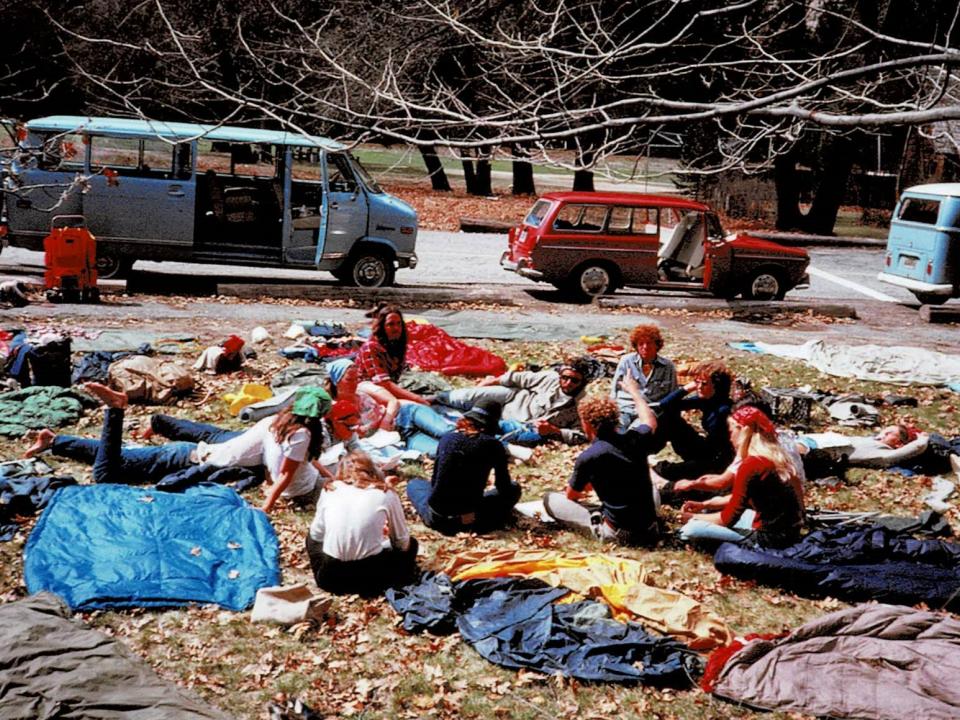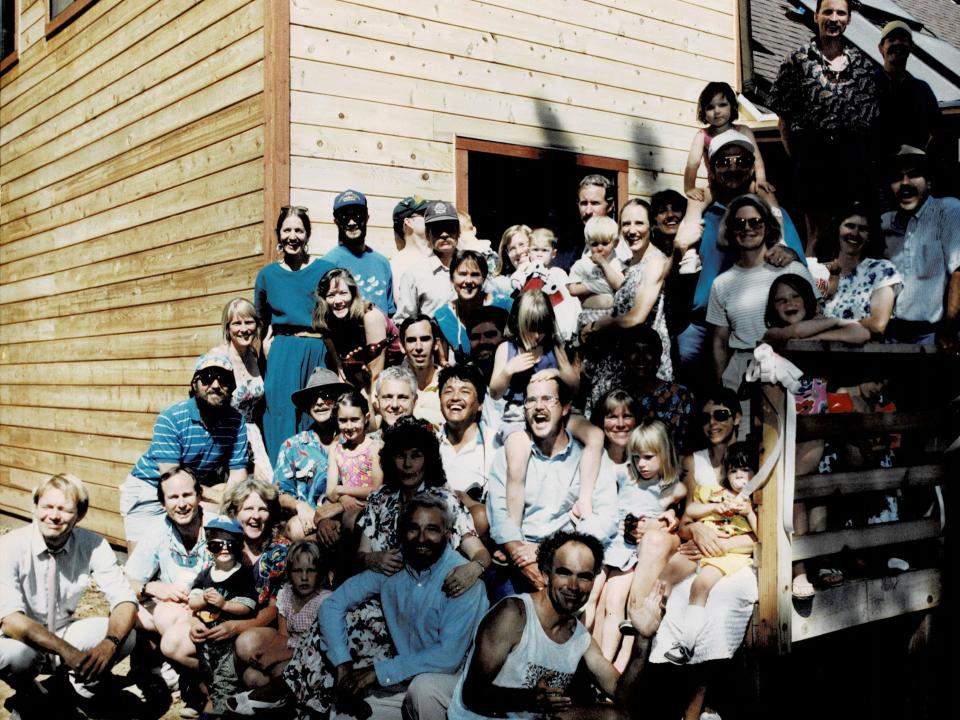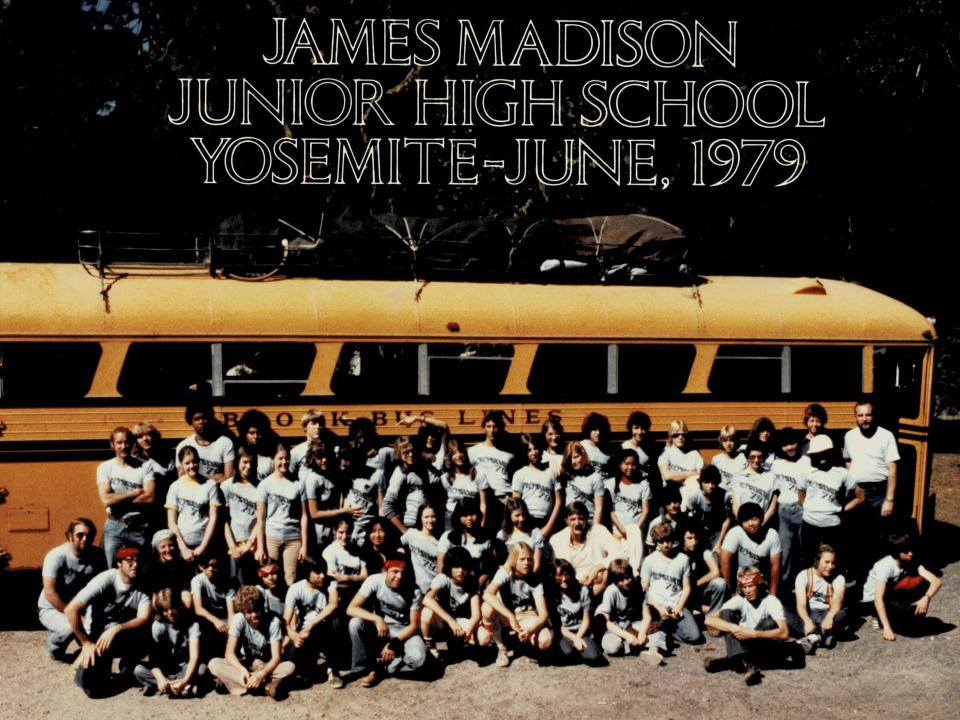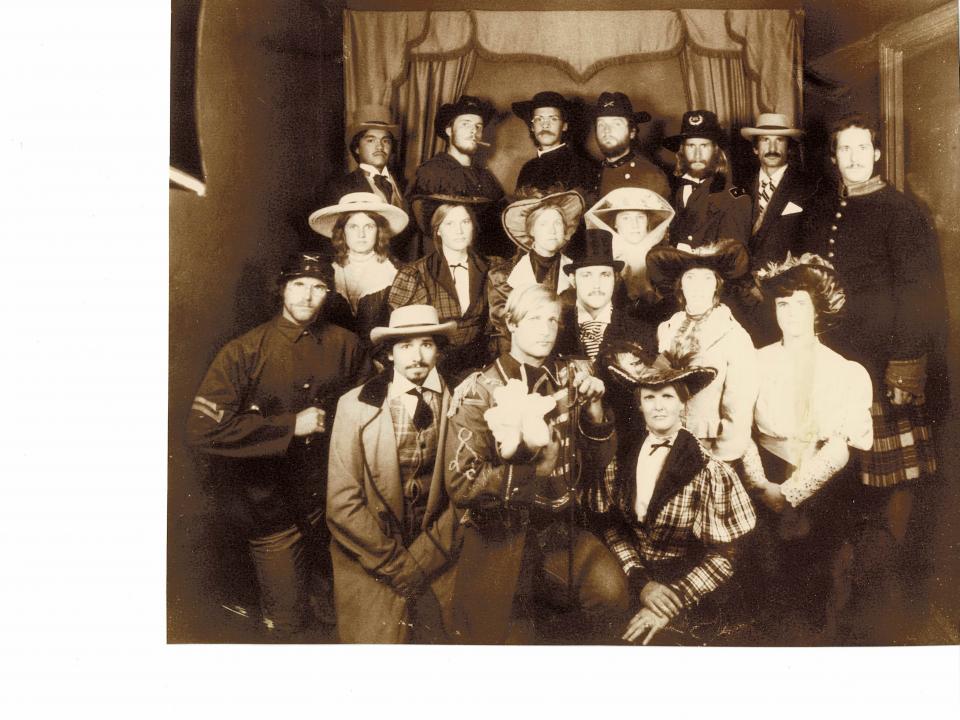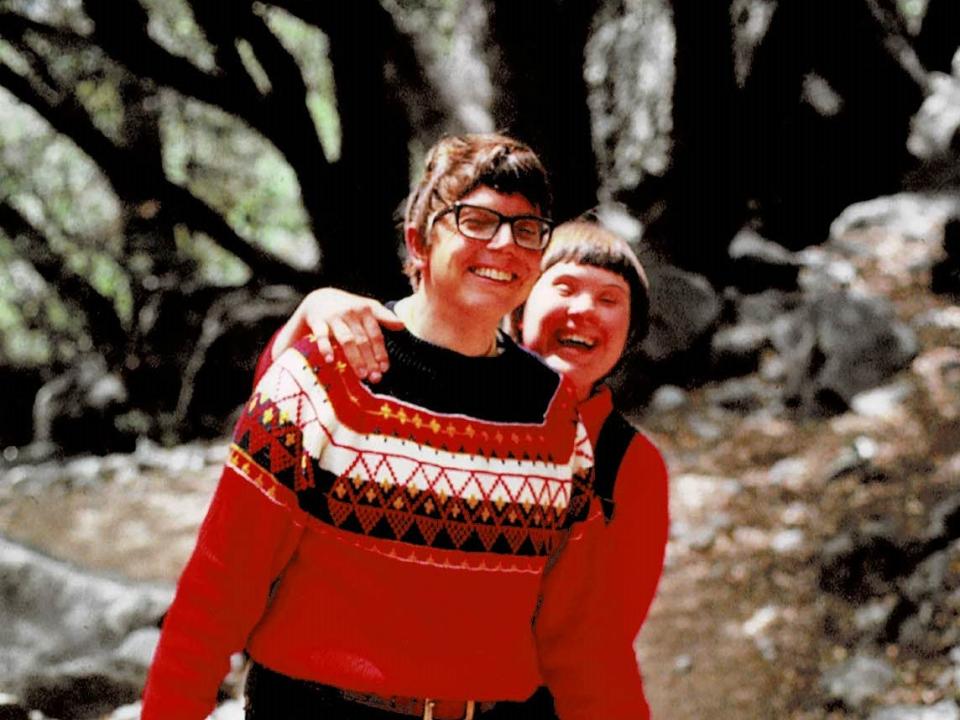The Early Days of Yosemite Institute
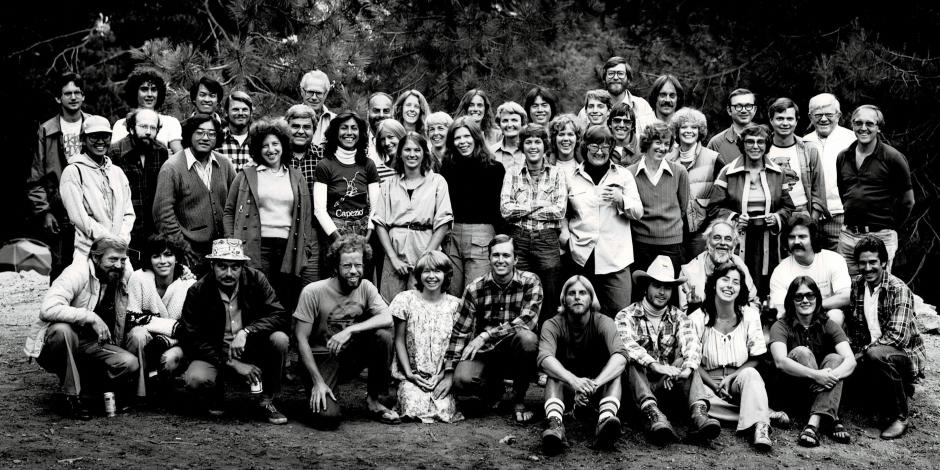
Bob Hansen’s enduring connection with nature began when he was a toddler. Every summer his family spent two weeks camping in California state parks. In 1963, when Bob was 15-years-old his family made a change and decided to camp in Yosemite National Park at Tuolumne Meadows. They ended up at a campsite surrounded by a group of Sierra Club members who were devotees of Yosemite, especially Tuolumne Meadows and the adjacent wilderness. Two high school teachers in this group invited Bob to spend three days with them on a burro-assisted wilderness camping trip at Young Lakes. For Bob, this first wilderness experience with educators—full of knowledge about Sierra natural history including glacial polish, erratic boulders, scree, alpine wildflowers and wildlife—was a defining moment. The Sierra became a magnet for him and led to backpack trips, learning to ski at Badger Pass, and a bit of bouldering and climbing on the Glacier Point apron.
Years on, Bob would take a job with the then Yosemite Institute as assistant program director in 1974 and eventually become Yosemite’s first Campus Director in 1977.
“My experience with the Yosemite Institute was a defining part of my career,” Bob said during a recent interview. “I am completely devoted to national and state parks. I just can’t get enough of parks. But my touchstone park remains Yosemite. It’s a place I need to go back to with regularity and connect with what for me are its defining features.”
Bob graduated with a teaching credential from San Francisco State University in 1972 and taught for a year and a half in an alternative private mobile school with Bill Edison, who had been his master teacher at SF State’s attached Fredrick Burke Elementary School. But Bob wanted to escape the Bay Area and teach elementary school in a small town on the California coast and thus, interviewed for positions in a couple of schools along the coast. He then heard about an opening at Yosemite Institute from SF State career counselor, Gail Humphrys. He applied for the job and was granted an interview, but before it was to take place he was offered a teaching job at Redwood Elementary School in Fort Bragg. The prospect of living and teaching in Yosemite National Park captured his imagination and he turned down the job in Fort Bragg, loaded up his VW bus and headed for the Sierra.
My experience with the Yosemite Institute was a defining part of my career. I am completely devoted to national and state parks. I just can’t get enough of parks. But my touchstone park remains Yosemite. It’s a place I need to go back to with regularity and connect with what for me are its defining features.Bob Hansen, former Yosemite Institute Campus Director
Lloyd Chiswick, program director at YI, interviewed Bob and explained that YI was going through a challenging time of change and program development, and offered him to choose between being either an instructor or a “program assistant” working part-time in the field and part-time in the office. Bob chose the latter.
Bob spent six years with YI, which would serve as the foundation for a career in nature organizations and park philanthropy. For Bob, the cornerstone of his time with YI was the lifelong friendships and relationships with Yosemite residents, especially the ones built during the season he became the Yosemite Campus Director and was tasked with hiring 12 new educators. All of them were recent college graduates from a variety of fields, and together they went through a rigorous training and team building experience in San Francisco.
This group became one of the best core teams that YI had had. A photo of that group of educators and Bob, dressed in costume, taken during the training in San Francisco, is one of Bob’s most treasured images.
“In the early days of YI, it was an all hands on deck scene and the educators were involved in nearly every aspect of the operations. Everyone felt like it needed every ounce of their time and energy to achieve success. There was no guarantee that YI was going to last,” explained Bob. “The educators were among the most talented, dedicated and determined people that I have ever worked with. I marvel at what they were able to accomplish and how incredibly hard they worked.”
“Not only did they do the work to create curriculum and connect kids to nature, but they were responsible for nearly everything that kept the programs up and running. They maintained the cross-country ski equipment, snowshoes and a fleet of bicycles, assembled the lunches for their group, served as hosts for school groups, helped cook meals, serve, clean-up, run and repair the generator and build the fire in the heater that provided hot water in the bathroom at Crane Flat, and did just about anything else that made the program go,” Bob said, “They went above and beyond the call of duty to deliver an exceptional experience for their students.”
It was a group of such educators who one summer helped set up an American Lung Association camp at the Crane Flat campus for asthmatic kids from the Central Valley. They designed the entire program in collaboration with doctors and nurses taking care of kids to connect them to nature and give them a summer camp experience they would not have had otherwise. At other times, the instructors engaged in adapting the regular program for students with a variety of special needs: blind students were led on nature walks and, as an example of the degree to which instructors were ready to give a student the experience that other able-bodied students were having, Chuck Haris carried a mobility impaired student up the Yosemite Falls trail to Columbia Point, 1,000 feet above the valley floor.
A scholarship program, funded in large part by the sale of YI t-shirts, was a big part of the Institute program in the late 1970s. It helped bring kids who had never seen the stars at night to Yosemite National Park to experience the wild woods and night sky for the first time.
On weekends, after a long week of work or on other days when not assigned to teach, the educators would go bouldering, rock climbing and skiing, and would explore places like the south fork of the Tuolumne, old stage roads including the Big Oak Flat and Coulterville Roads or the Merced Grove. One night a group of staff members were sitting around in a cabin in Foresta after a potluck dinner talking about the Merced grove of redwoods and the boarded-up log cabin there. The idea of fixing up the cabin to create a real wilderness experience there for students was discussed.
Bob took the idea to the park superintendent, Les Arnberger, and within a week the National Park Service turned over the Merced Cabin to YI. The staff cleaned up the cabin, installed metal bunks and an antique wood burning stove and launched the program. It was a huge success for the first group and many others to follow and added a whole dimension to the program. It was innovations like this and the ability to take risks that made for such a transformative experience in Yosemite.
The 1970s instructors did not reserve their passion for helping others to students and teachers and pushing the limits of adventure sports—they formed close friendships with neighbors, park service staff and other members of the close-knit Yosemite community. They joined the Winter Club and did the annual Trans Sierra ski trip, competed in the annual 10k cross country ski race, the Ancient Jocks Race at Badger Pass, as well as the annual “Regatta” race on the Merced River. Many of the staff were avid rock climbers and even made history when instructor Barb Eastman and Bev Johnson did the first all-woman ascent of the Nose on El Cap. Several instructors became close friends of handicapped historian author, Shirley Sargent. They would ski up to her snow-bound cabin at Flying Spur above Foresta to check on her and deliver her mail. One summer night they carried her up to the top of Sentinel Dome to view the night sky: it was just something that was fun, easy, and good to do for a friend.
In the early days of YI, it was an all hands on deck scene and the educators were involved in nearly every aspect of the operations... The educators were among the most talented, dedicated and determined people that I have ever worked with. I marvel at what they were able to accomplish and how incredibly hard they worked.Bob Hansen, former Yosemite Institute Campus Director
In addition to the commitment of the educators, Bob credits the board as instrumental in the growth of the organization.
“I don’t know of any other nonprofit in its infancy that had the impressive group of board members that YI did,” Bob recalled. “I was in awe of the board members. It was a stellar group of individuals and most importantly, they were accessible. They wanted YI to succeed.”
Members of that early board in 1975 included Phil Boone, Virginia Duncan (KQED), Peter Fenchel, Bob Hicks, Dr. Charles Houston (mountaineer and high altitude research scientist), William Lane (Sunset Magazine), Bob Maynard (Curry Company), Chauncey Medberry, Wayne Merry (First ascent of El Capitan, founder of Yosemite Mountaineering School), Emil Mrak, Roderick Nash (UCSB professor and author of Wilderness and the American Mind), Jack Walston (Chair), Caspar Weinberger (Secretary of Defense), Clay Whitehead (special assistant to President Nixon), Bill Anders (Apollo 8 astronaut who took the photo “earthrise”), and Galen Rowell (National Geographic adventure photojournalist and first ascent climber).
Bob recalls a board meeting that took place at Crane Flat when the staff was invited to observe the proceedings.
“The intellect in the room was palpable and the attention these volunteer board members gave to the Institute was awe inspiring,” he recalled. “You could call up someone like Caspar Weinberger at his office in Washington D.C. and he would take the time to answer questions and give good advice. In the late 70s there were still many challenges of course, but it was a time of wonderful growth and development.”
After leaving the Yosemite Institute/NatureBridge, Bob spent 10 years with The Nature Conservancy as the Santa Cruz Island Project Director and then 20 years as president of The Yosemite Fund, now Yosemite Conservancy. Throughout his career he maintained relationships with YI staff, and Yosemite—based friends. His YI/NatureBridge work and life in Yosemite set him on the path to designing and conducting UCSB Extension field seminars, conducting workshops, mentoring, and a variety of consulting assignments with National Park partner organizations and Save the Redwoods League. In 2014, Bob founded The Fund for People in Parks which has provided over $1.5 million in grants to those national parks which Bob likes to call “hidden gems among the crown jewels.”
As Bob reflected on his experience with Yosemite National Park and how NatureBridge teaches about life in the outdoors and the wilderness, he paused to think about what the next 50 years of NatureBridge means to him.
“My hope for NatureBridge is that it has some significant influence on breathing life back into an ailing planet and providing direction for people to engage with nature without leaning too much on technology,” said Bob. “I’m encouraged, and in fact I marvel, at the degree to which young people gravitate towards organizations like NatureBridge and are working to come up with solutions to our environmental problems and put them into effect.”
At the end of the day, for Bob, his experience with Yosemite Institute and the park was about people more than place.
“In the 1970s, young and old worked to save parts of our environment and push back against development. They created protected open spaces, saved San Francisco Bay, old growth redwoods and much of the California coast,” he said. “Now is the time for the current generation to take the lead to protect and make more resilient our oceans and land. NatureBridge can be a vehicle to foster and promote that initiative. Onward and upward for NatureBridge.”
